Modeling and Experimental Characterization of Bonding Delaminations in Single-Element Ultrasonic Transducer
Abstract
1. Introduction
2. Materials and Methods
2.1. Studied Single-Element Transducer
2.2. Electromechanical Admittance
3. Finite Element Modeling
3.1. Delamination Types
3.2. Case I: Delaminations Between Ceramic and Backing
3.3. Case II: Delaminations Between Ceramic and Matching Layer
4. Experimental Validation
4.1. Experiment Setup
4.2. Comparison Between Experiment and FE modeling
5. Conclusions
Author Contributions
Funding
Institutional Review Board Statement
Informed Consent Statement
Data Availability Statement
Acknowledgments
Conflicts of Interest
References
- Kochański, W.; Boeff, M.; Hashemiyan, Z.; Staszewski, W.J.; Verma, P.K. Modelling and Numerical Simulations of In-Air Reverberation Images for Fault Detection in Medical Ultrasonic Transducers: A Feasibility Study. J. Sens. 2015, 2015, 1–14. [Google Scholar] [CrossRef]
- Weigang, B.; Moore, G.W.; Gessert, J.; Phillips, W.H.; Schafer, M. The Methods and Effects of Transducer Degradation on Image Quality and the Clinical Efficacy of Diagnostic Sonography. J. Diagn. Med. Sonogr. 2003, 19, 3–13. [Google Scholar] [CrossRef]
- Martensson, M.; Olsson, M.; Segall, B.; Fraser, A.G.; Winter, R.; Brodin, L.-A. High Incidence of Defective Ultrasound Transducers in Use in Routine Clinical Practice. Eur. J. Echocardiogr. 2009, 10, 389–394. [Google Scholar] [CrossRef] [PubMed]
- Martensson, M.; Olsson, M.; Brodin, L.-A. Ultrasound Transducer Function: Annual Testing Is Not Sufficient. Eur. J. Echocardiogr. 2010, 11, 801–805. [Google Scholar] [CrossRef]
- Sipilä, O.; Mannila, V.; Vartiainen, E. Quality Assurance in Diagnostic Ultrasound. Eur. J. Radiol. 2011, 80, 519–525. [Google Scholar] [CrossRef] [PubMed]
- Dudley, N.J.; Woolley, D.J. A Multicentre Survey of the Condition of Ultrasound Probes. Ultrasound 2016, 24, 190–197. [Google Scholar] [CrossRef] [PubMed]
- Dudley, N.J.; Woolley, D.J. Blinded Comparison between an In-Air Reverberation Method and an Electronic Probe Tester in the Detection of Ultrasound Probe Faults. Ultrasound Med. Biol. 2017, 43, 2954–2958. [Google Scholar] [CrossRef]
- Fabiszewska, E.; Pasicz, K.; Grabska, I.; Skrzyński, W.; Ślusarczyk-Kacprzyk, W.; Bulski, W. Evaluation of Imaging Parameters of Ultrasound Scanners: Baseline for Future Testing. Pol. J. Radiol. 2017, 82, 773–782. [Google Scholar] [CrossRef]
- Hashemiyan, Z.; Packo, P.; Staszewski, W.J.; Uhl, T.; Verma, P.K. Local Interaction Simulation Approach for Fault Detection in Medical Ultrasonic Transducers. J. Sens. 2015, 2015, 1–12. [Google Scholar] [CrossRef]
- Quinn, T.; Verma, P.K. The Analysis of In-Air Reverberation Patterns from Medical Ultrasound Transducers. Ultrasound 2014, 22, 26–36. [Google Scholar] [CrossRef]
- Van Horssen, P.; Schilham, A.; Dickerscheid, D.; van der Werf, N.; Keijzers, H.; van Almere, R.; Kuijer, J.; Peters, R.; Hofman, M. Automated Quality Control of Ultrasound Based on In-Air Reverberation Patterns. Ultrasound 2017, 25, 229–238. [Google Scholar] [CrossRef] [PubMed]
- Dudley, N.J. Ultrasound Probe Acceptance Testing Using the In-Air Reverberation Pattern. Ultrasound Med. Biol. 2019, 45, 1475–1482. [Google Scholar] [CrossRef]
- Xu, Y.G.; Liu, G.R. A Modified Electro-Mechanical Impedance Model of Piezoelectric Actuator-Sensors for Debonding Detection of Composite Patches. J. Intell. Mater. Syst. Struct. 2002, 13, 389–396. [Google Scholar] [CrossRef]
- Park, S.; Yun, C.B.; Roh, Y.; Lee, J.-J. Health Monitoring of Steel Structures Using Impedance of Thickness Modes at PZT Patches. Smart Struct. Syst. 2005, 1, 339–353. [Google Scholar] [CrossRef]
- Giurgiutiu, V. Structural Health Monitoring: With Piezoelectric Wafer Active Sensors; Elsevier: Amsterdam, The Netherlands, 2007. [Google Scholar]
- Dugnani, R.; Zhuang, Y.; Kopsaftopoulos, F.; Chang, F.-K. Adhesive Bond-Line Degradation Detection via a Cross-Correlation Electromechanical Impedance–Based Approach. Struct. Health Monit. Int. J. 2016, 15, 650–667. [Google Scholar] [CrossRef]
- Naidu, A.S.K.; Soh, C.K. Identifying Damage Location with Admittance Signatures of Smart Piezo-Transducers. J. Intell. Mater. Syst. Struct. 2004, 15, 627–642. [Google Scholar] [CrossRef]
- Providakis, C.; Voutetaki, M. Electromechanical Admittance–Based Damage Identification Using Box-Behnken Design of Experiments. Struct. Durab. Health Monit. 2007, 3, 211. [Google Scholar] [CrossRef]
- Rautela, M.; Bijudas, C.R. Electromechanical Admittance Based Integrated Health Monitoring of Adhesive Bonded Beams Using Surface Bonded Piezoelectric Transducers. Int. J. Adhes. Adhes. 2019, 94, 84–98. [Google Scholar] [CrossRef]
- Ai, D.; Luo, H.; Zhu, H. Numerical and Experimental Investigation of Flexural Performance on Pre-Stressed Concrete Structures Using Electromechanical Admittance. Mech. Syst. Signal Process. 2019, 128, 244–265. [Google Scholar] [CrossRef]
- Tinoco, H.A.; Rosas-Bastidas, D.A. Experimental Study of the Debonding Effects on the Electromechanical Impedance of Piezo Wafer Active Sensors. In Proceedings of the Third International Conference on Advanced Mechatronics, Design, and Manufacturing Technology (AMDM 2016), Cali, Colombia, 13–15 April 2016; pp. 13–15. [Google Scholar]
- Ding, W.; Bavencoffe, M.; Lethiecq, M. Health Monitoring of Single-Element Piezoelectric Transducer Using Its Electromechanical Admittance. IEEE Trans. Ultrason. Ferroelectr. Freq. Control 2020, 1. [Google Scholar] [CrossRef]
- Ferroperm Piezoceramic Material Data for Modelling. Available online: https://www.meggittferroperm.com (accessed on 22 April 2019).
- 3D Printer Filaments. Available online: https://www.raise3d.com (accessed on 22 April 2019).
- Desilets, C.S.; Fraser, J.D.; Kino, G.S. The Design of Efficient Broad-Band Piezoelectric Transducers. IEEE Trans. Sonic. Ultrason. 1978, 25, 115–125. [Google Scholar] [CrossRef]
- Torchinsky, D.H.; Johnson, J.A.; Nelson, K.A. A Direct Test of the Correlation between Elastic Parameters and Fragility of Ten Glass Formers and Their Relationship to Elastic Models of the Glass Transition. J. Chem. Phys. 2009, 130, 064502. [Google Scholar] [CrossRef] [PubMed]
- Park, S.; Yun, C.-B.; Inman, D.J. Structural Health Monitoring Using Electro-Mechanical Impedance Sensors. Fatigue Fract. Eng. Mat. Struct. 2008, 31, 714–724. [Google Scholar] [CrossRef]
- Buethe, I.; Moix-Bonet, M.; Wierach, P.; Fritzen, C.-P. Check of Piezoelectric Transducers Using the Electro-Mechanical Impedance. In Proceedings of the EWSHM—7th European Workshop on Structural Health Monitoring, Nantes, France, 8–11 July 2014. [Google Scholar]
- Mueller, I.; Fritzen, C.-P. Inspection of Piezoceramic Transducers Used for Structural Health Monitoring. Materials 2017, 10, 71. [Google Scholar] [CrossRef] [PubMed]
- Lerch, R. Simulation of Piezoelectric Devices by Two- and Three-Dimensional Finite Elements. IEEE Trans. Ultrason. Ferroelectr. Freq. Control 1990, 37, 233–247. [Google Scholar] [CrossRef] [PubMed]
- Medina, J.; Buiochi, F.; Adamowski, J.C. Numerical Modeling of a Circular Piezoelectric Ultrasonic Transducer Radiating in Water. In Proceedings of the ABCM Symposium Series in Mechatronics, Ouro Preto, Brazil, 6–11 November 2005; Volume 2, pp. 458–464. [Google Scholar]
- Lethiecq, M.; Patat, F.; Pourcelot, L.; Tran-Huu-Hue, L. Measurement of Losses in Five Piezoelectric Ceramics between 2 and 50 MHz. IEEE Trans. Ultrason. Ferroelectr. Freq. Control 1993, 40, 232–237. [Google Scholar] [CrossRef]
- Uchino, K.; Zheng, J.H.; Chen, Y.H.; Du, X.H.; Ryu, J.; Gao, Y.; Ural, S.; Priya, S.; Hirose, S. Loss Mechanisms and High Power Piezoelectrics. J. Mater. Sci. 2006, 41, 217–228. [Google Scholar] [CrossRef]
- Lakes, R.S. Viscoelastic Solids; CRC Press: Boca Raton, FL, USA, 1998. [Google Scholar]
- Berenger, J.P. A Perfectly Matched Layer for the Absorption of Electromagnetic Waves. J. Comput. Phys. 1994, 114, 185–200. [Google Scholar] [CrossRef]
- Matar, O.B.; Preobrazhensky, V.; Pernod, P. Two-Dimensional Axisymmetric Numerical Simulation of Supercritical Phase Conjugation of Ultrasound in Active Solid Media. J. Acoust. Soc. Am. 2005, 118, 2880–2890. [Google Scholar] [CrossRef]
- Bavencoffe, M.; Morvan, B.; Hladky, A.C.; Matar, O.B.; Izbicki, J.L. Development of a Suitable PML for an Harmonic Study of a Finite 1D Phononic Crystal. J. Acoust. Soc. Am. 2008, 123, 3038. [Google Scholar] [CrossRef]
- Kocbach, J. Finite Element Modeling of Ultrasonic Piezoelectric Transducers. Ph.D. Thesis, University of Bergen, Bergen, Norway, 2000. [Google Scholar]
- Abboud, N.N.; Wojcik, G.L.; Vaughan, D.K.; Mould, J., Jr.; Powell, D.J.; Nikodym, L. Finite Element Modeling for Ultrasonic Transducers. In Proceedings of the Medical Imaging 1998: Ultrasonic Transducer Engineering; Shung, K.K., Ed.; SPIE: Bellingham, WA, USA, 1998. [Google Scholar]
- Impedance Analyzer IM3570. Available online: https://www.hioki.com/en/products/detail/?product_key=5539 (accessed on 28 December 2020).
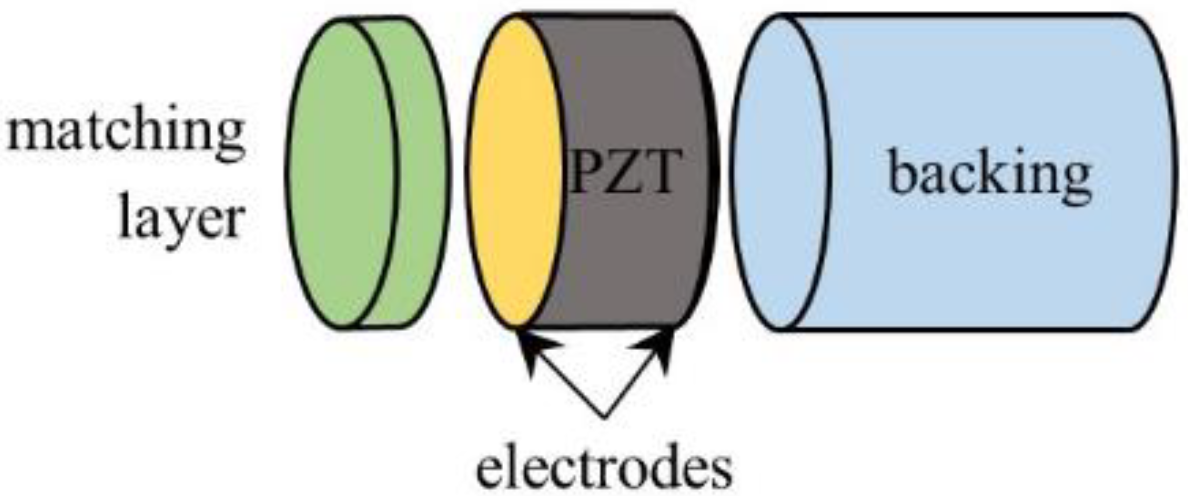
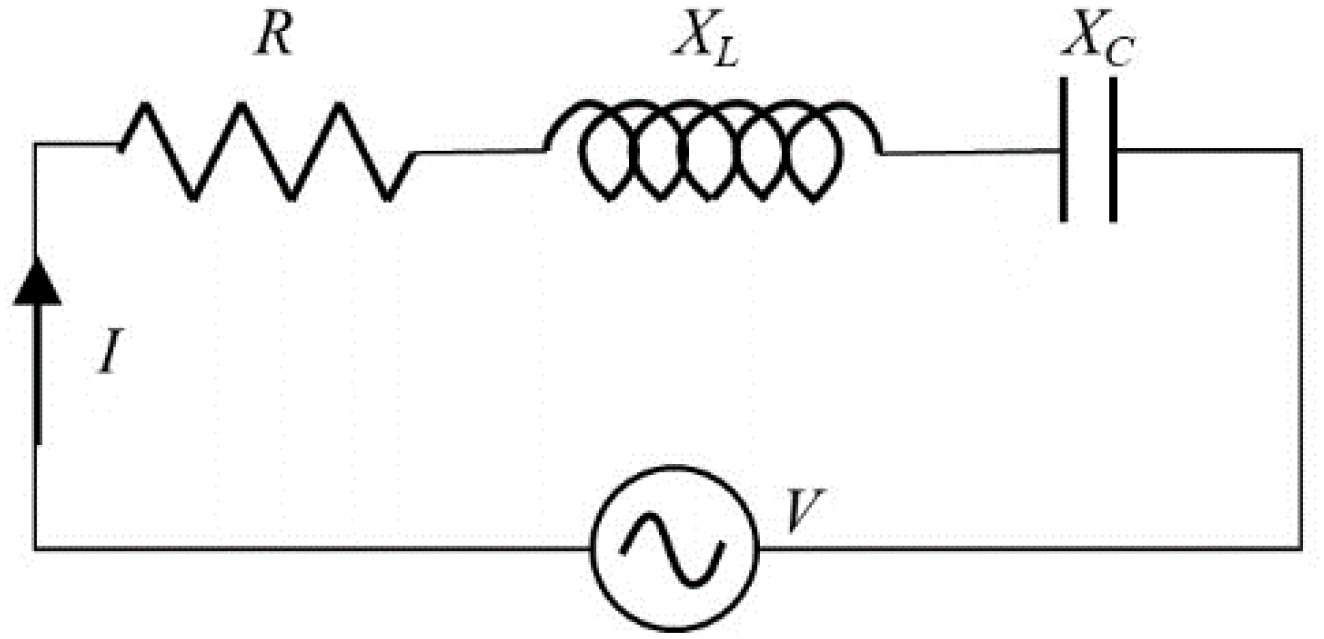
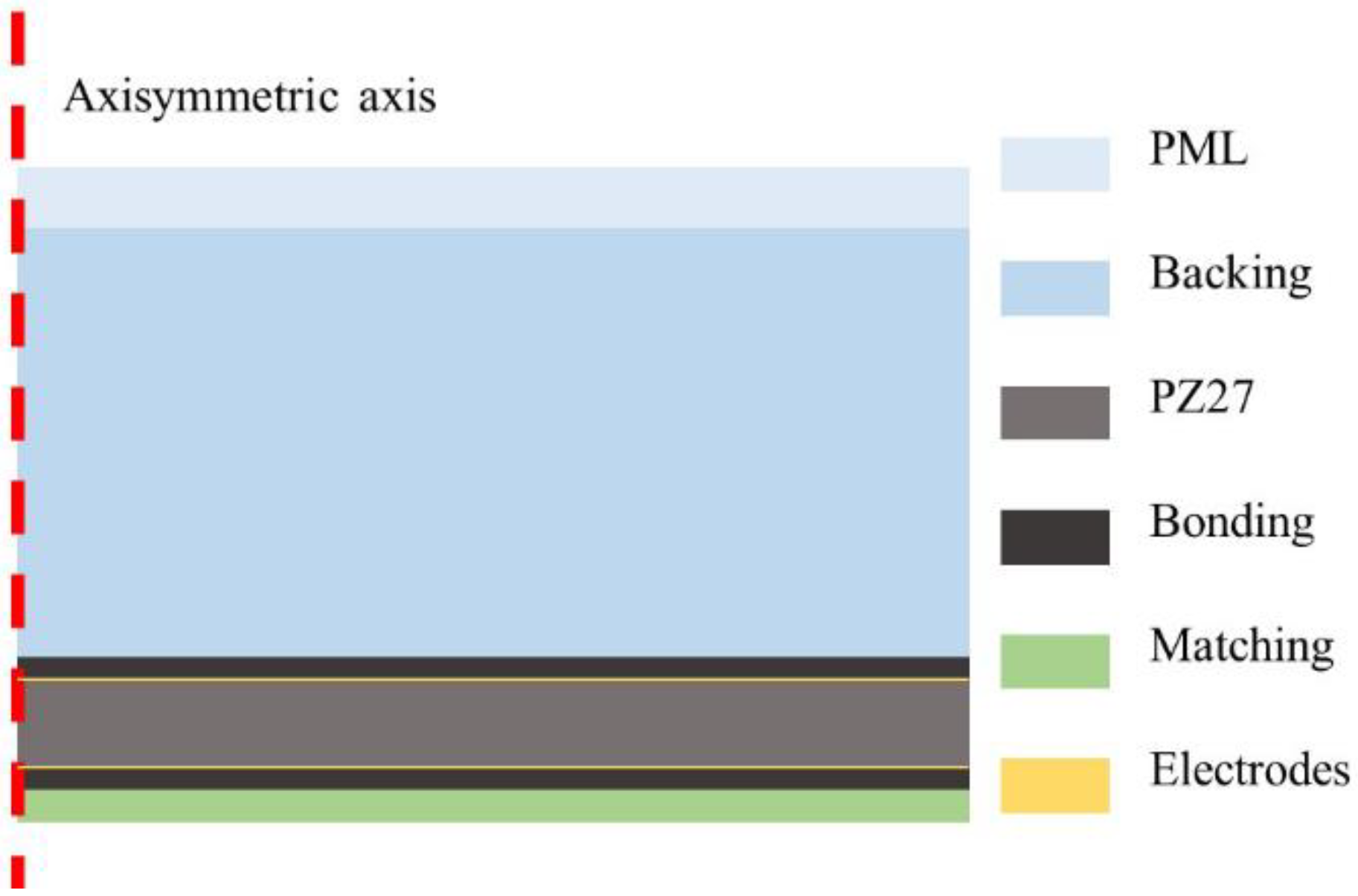
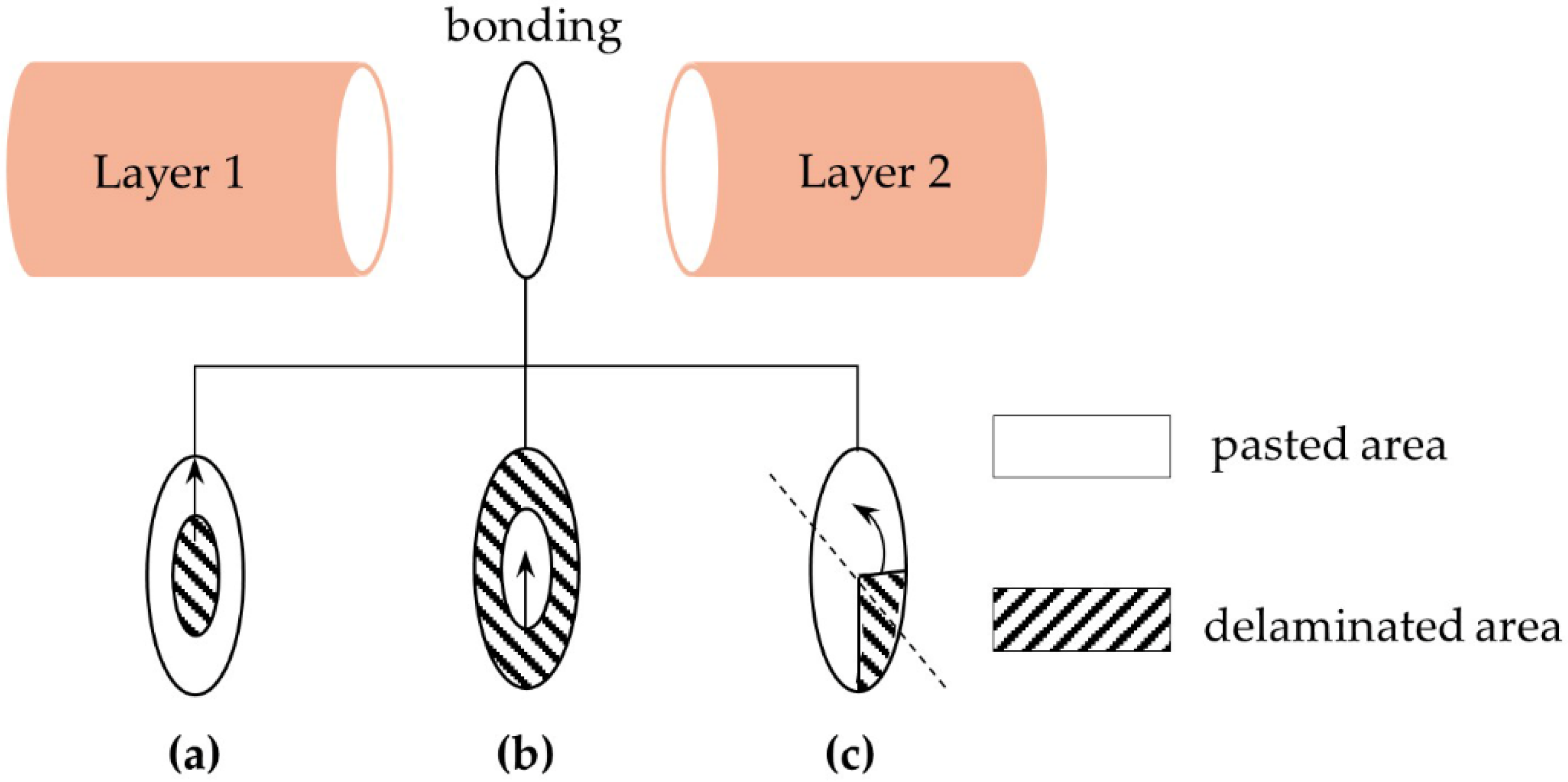
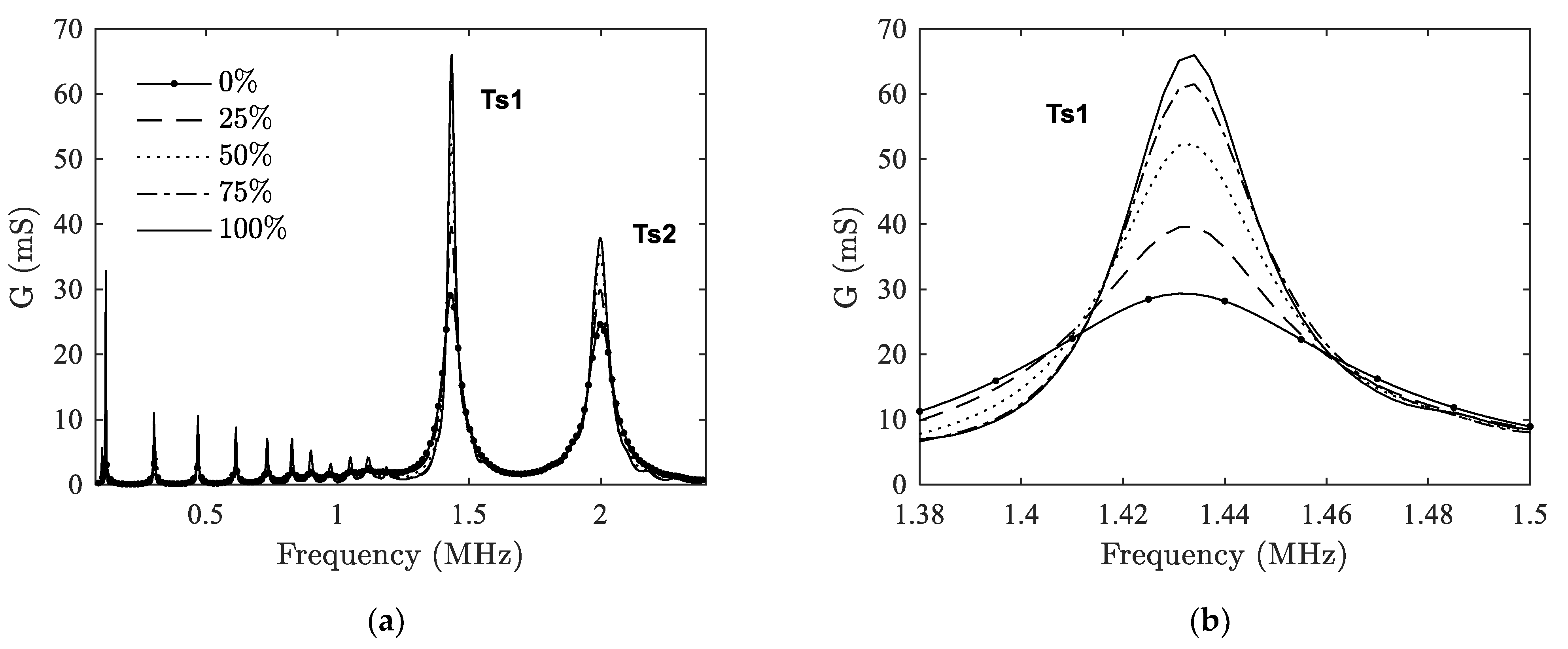
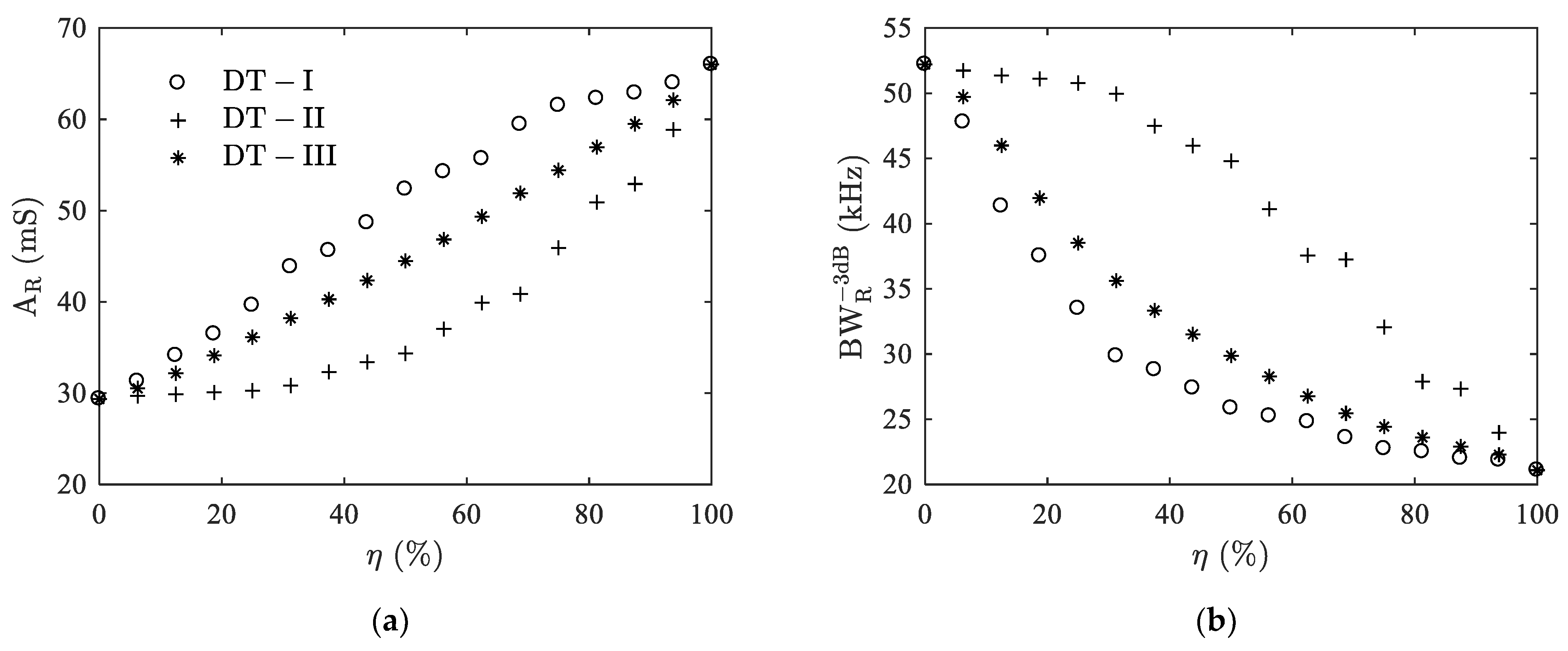
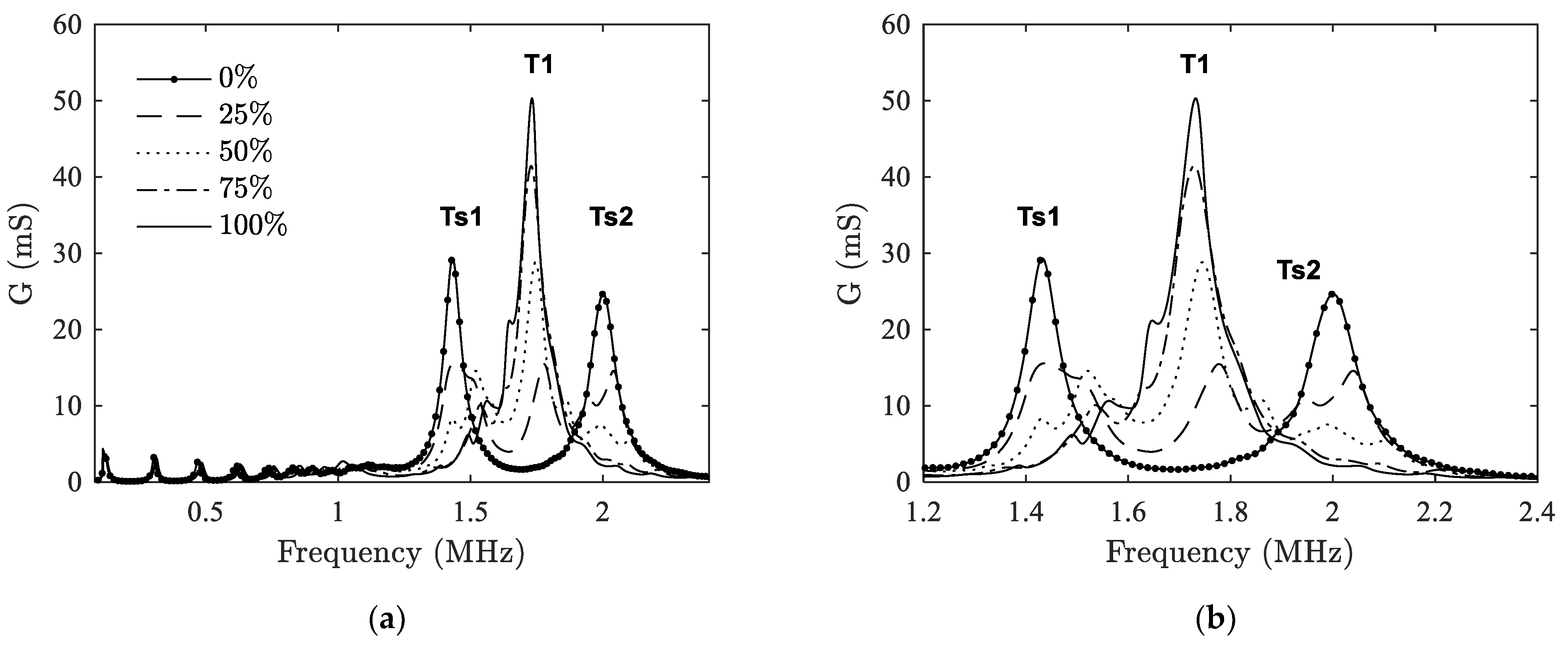
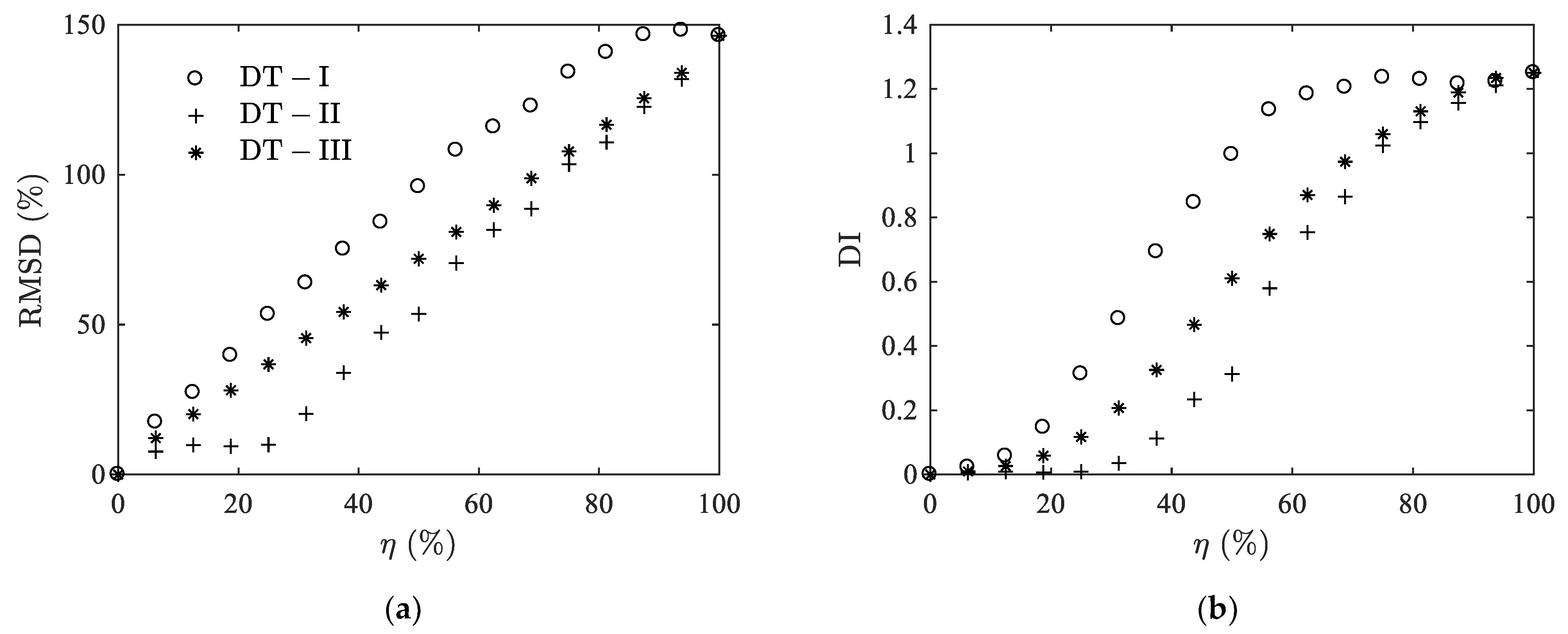
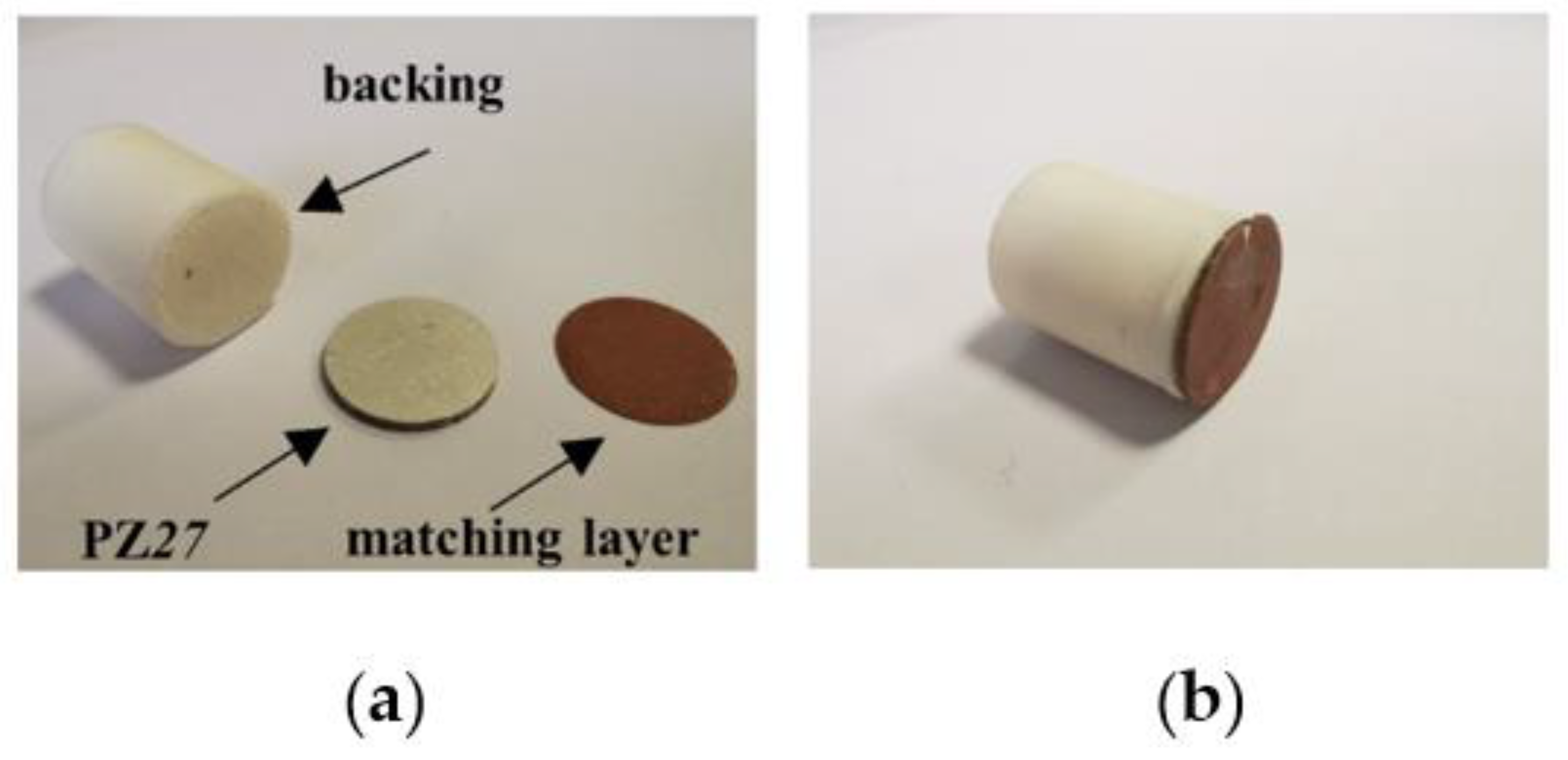

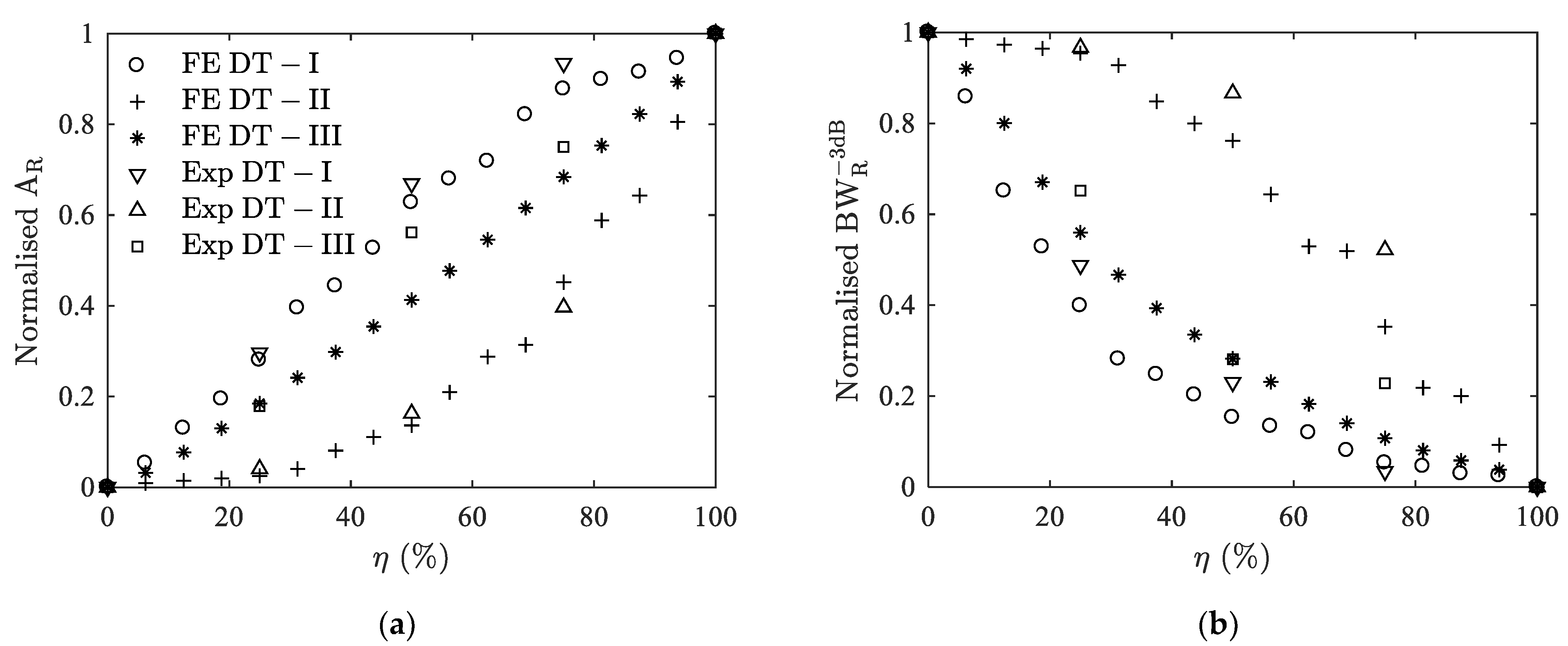
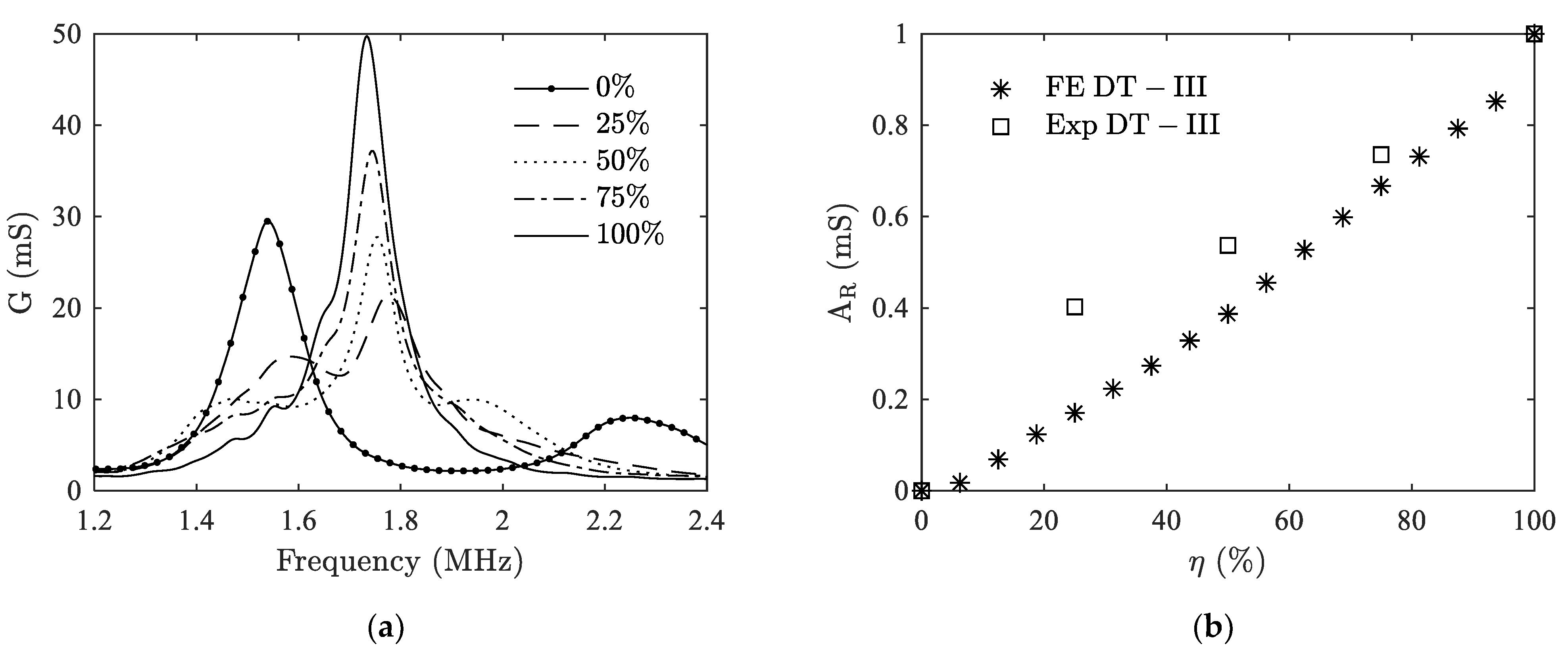
| ϕ (mm) | t (mm) | ρ (kg/m3) | (GPa) | (GPa) | (GPa) | (GPa) | (GPa) |
|---|---|---|---|---|---|---|---|
| 16 | 1.13 | 7879.5 | 148.6 | 106.1 | 87.5 | 144.4 | 36.6 |
| (GV/m) | (GV/m) | (GV/m) | (Gm/F) | (Gm/F) | (%) | (%) | Z (MRayl) |
| −0.38 | 1.98 | 1.16 | 9.99 | 0.12 | 0.45 | 0.27 | 33.7 |
| Components | ϕ (mm) | t (mm) | ρ (kg/m3) | (m/s) | (m/s) | (%) | Z (MRayl) |
|---|---|---|---|---|---|---|---|
| Backing | 16 | 20 | 1135 | 1738 | 952.2 | 5 | 1.97 |
| Matching | 16 | 0.18 | 3284 | 1246 | 740.2 | 5 | 4.09 |
| Bonding | 16 | 0.002 | 1250 | 2369 | 994 | 1 | 2.96 |
| η (%) | DT-I (%) | DT-II (%) | DT-III (%) |
|---|---|---|---|
| 25 | 1.7 | 1.6 | 0.6 |
| 50 | 4.2 | 2.7 | 14.9 |
| 75 | 5.7 | 5.5 | 6.6 |
| η (%) | DT-I (%) | DT-II (%) | DT-III (%) |
|---|---|---|---|
| 25 | 8.9 | 1.3 | 9.2 |
| 50 | 7.7 | 10.4 | 0.1 |
| 75 | 1.8 | 16.9 | 12.1 |
Publisher’s Note: MDPI stays neutral with regard to jurisdictional claims in published maps and institutional affiliations. |
© 2021 by the authors. Licensee MDPI, Basel, Switzerland. This article is an open access article distributed under the terms and conditions of the Creative Commons Attribution (CC BY) license (https://creativecommons.org/licenses/by/4.0/).
Share and Cite
Ding, W.; Bavencoffe, M.; Lethiecq, M. Modeling and Experimental Characterization of Bonding Delaminations in Single-Element Ultrasonic Transducer. Materials 2021, 14, 2269. https://doi.org/10.3390/ma14092269
Ding W, Bavencoffe M, Lethiecq M. Modeling and Experimental Characterization of Bonding Delaminations in Single-Element Ultrasonic Transducer. Materials. 2021; 14(9):2269. https://doi.org/10.3390/ma14092269
Chicago/Turabian StyleDing, Wenxiang, Maxime Bavencoffe, and Marc Lethiecq. 2021. "Modeling and Experimental Characterization of Bonding Delaminations in Single-Element Ultrasonic Transducer" Materials 14, no. 9: 2269. https://doi.org/10.3390/ma14092269
APA StyleDing, W., Bavencoffe, M., & Lethiecq, M. (2021). Modeling and Experimental Characterization of Bonding Delaminations in Single-Element Ultrasonic Transducer. Materials, 14(9), 2269. https://doi.org/10.3390/ma14092269






